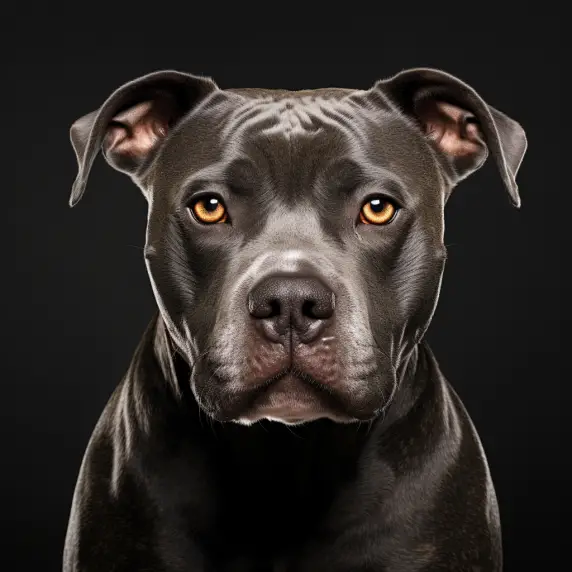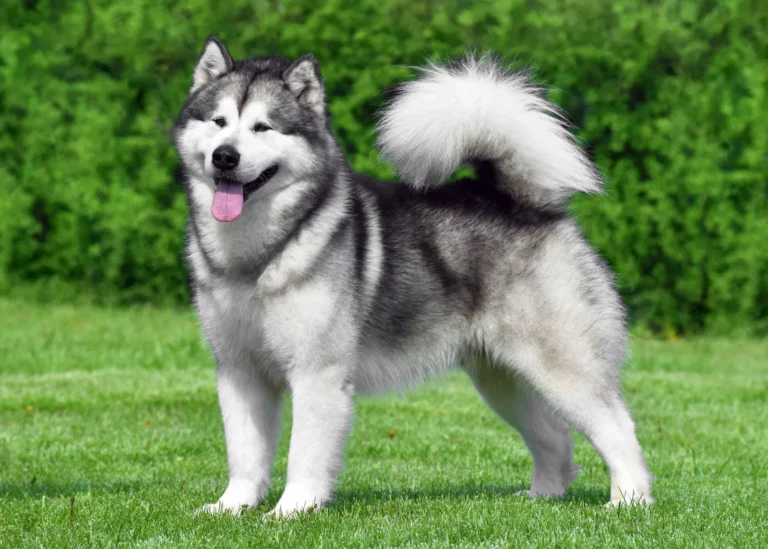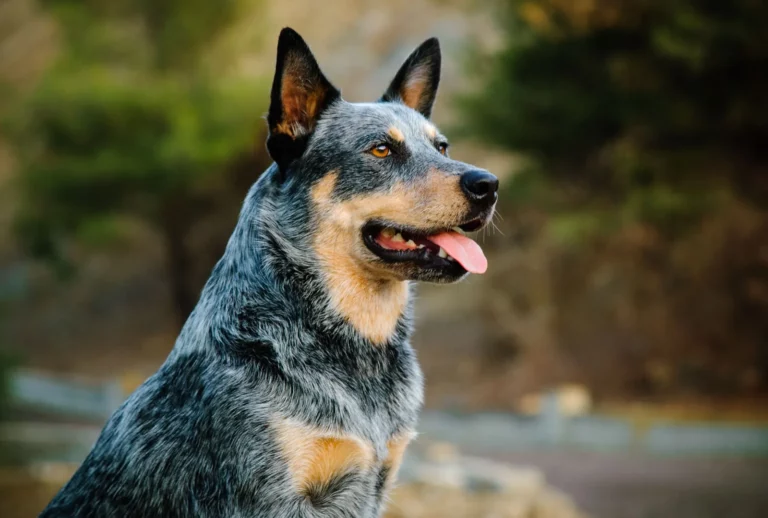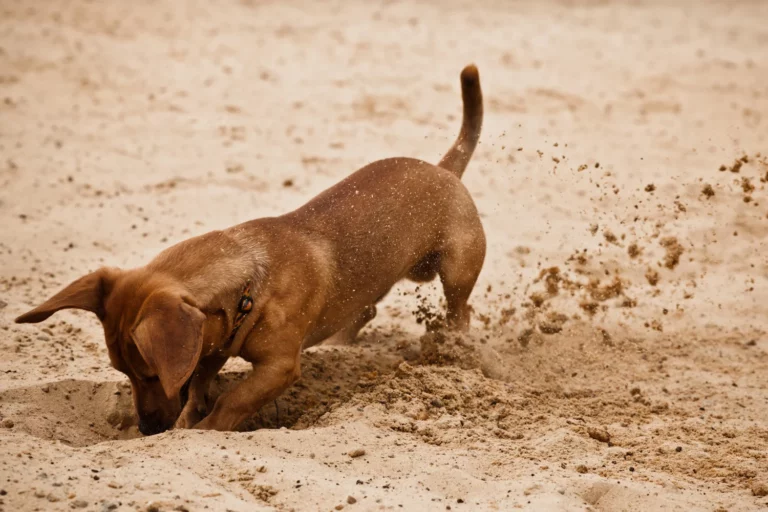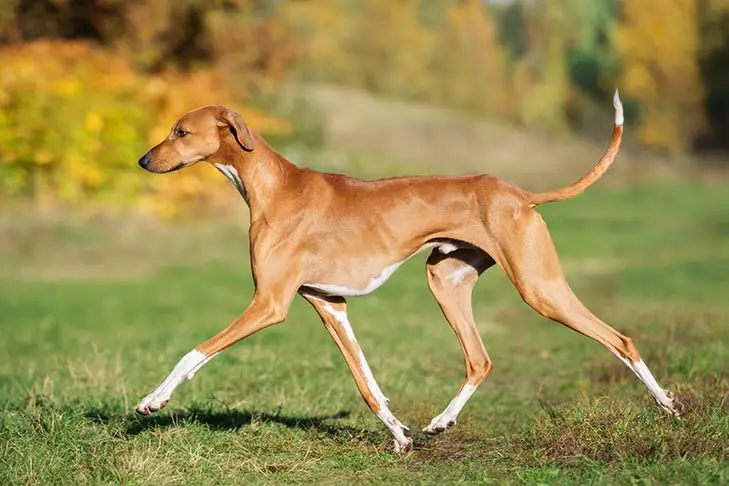Husky Australian Cattle Dog Mix: Your Complete Guide to the Ausky
Are you fascinated by the combination of the striking looks of a Siberian Husky and the intelligence and tenacity of an Australian Cattle Dog? If so, you’re in for a treat as we introduce you to the unique and spirited world of the Ausky, a mixed breed dog that showcases the best of both worlds.
In this comprehensive guide, we’ll delve into the history, physical characteristics, temperament, and care requirements of this exceptional hybrid. Get ready to be captivated by this energetic and loving companion that’s always ready to entertain and impress you with their charm and intelligence.
So, join us on this exciting journey as we uncover the intriguing secrets of the Husky Australian Cattle Dog Mix, and learn what it takes to be a responsible and dedicated Ausky owner.
Key takeaways
The Husky Australian Cattle Dog mix is a hybrid breed that combines traits from the Siberian Husky and the Australian Cattle Dog.
These dogs typically have high energy levels and require plenty of exercise.
They are intelligent, making them quick learners but also potential escape artists.
The breed generally has a lifespan of 12-16 years and a weight range of 35-50 pounds.
Their coat can vary greatly in color and requires regular grooming.
Socialization and training from a young age is crucial due to their strong-willed nature.
As a mixed breed, they can inherit health issues common to both parent breeds. Regular vet check-ups are essential.
History and Origins of the Ausky
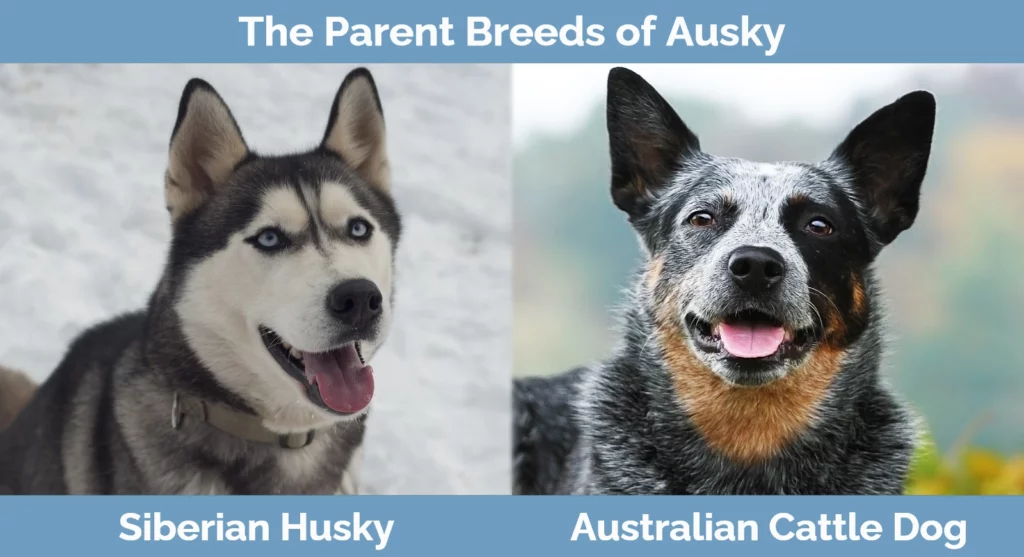
Origin of the Siberian Husky
The Siberian Husky is an ancient breed, believed to have originated in Siberia, Russia, thousands of years ago. These dogs were bred by the Chukchi people, who needed a strong, resilient, and efficient sled dog that could endure the harsh climate and extreme cold of the region.
No products found.
The Siberian Husky was carefully selected for their stamina, speed, and ability to travel long distances with minimal food. This breed was introduced to Alaska during the early 20th century and quickly gained popularity in sled dog racing, and later as a family companion and show dog worldwide.
Origin of the Australian Cattle Dog
The Australian Cattle Dog, also known as the Blue Heeler or Queensland Heeler, is a breed that was developed in Australia during the 19th century. The breed’s ancestors include the native Australian Dingo, which was crossbred with European herding dogs, such as the Smooth Collie and the Old English Sheepdog.
The goal was to create a tough, versatile herding dog that could withstand the harsh conditions of the Australian Outback while effectively managing cattle over long distances. The Australian Cattle Dog is known for its intelligence, agility, and strong work ethic, making it a valuable companion on the ranch as well as in various dog sports.
Development of the Ausky Breed
The Ausky is a relatively recent mixed breed dog, resulting from the intentional crossbreeding of the Siberian Husky and the Australian Cattle Dog. The breed was likely first developed in the United States within the last few decades.
While the precise origins of the Ausky are unknown, the goal of this hybrid is to combine the stamina, adaptability, and striking appearance of the Siberian Husky with the intelligence, work ethic, and tenacity of the Australian Cattle Dog.
The result is a versatile, high-energy dog that thrives in active households and can excel in various activities, such as herding, agility, and even sled dog sports.
No products found.
Physical Characteristics
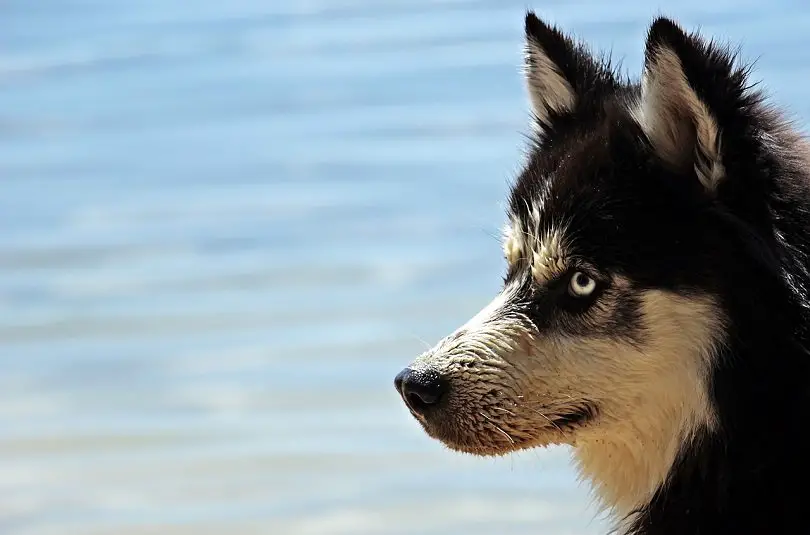
Size and Weight
The Ausky is a medium-sized dog, with a height that typically ranges from 18 to 24 inches and a weight between 40 and 60 pounds. As a mixed breed, the specific size and weight of an individual Ausky can vary depending on the genetic influence of its Siberian Husky and Australian Cattle Dog parents. Generally, male Auskies tend to be slightly larger than their female counterparts.
Coat Type and Colors
Auskies have a dense, double-layered coat that offers protection against harsh weather conditions, much like their parent breeds. The undercoat is soft and insulating, while the outer coat is made up of longer, coarser guard hairs. The coat texture may vary from straight to slightly wavy.
The color patterns of an Ausky can vary widely, as both parent breeds showcase a range of hues. Common coat colors include black, blue, blue merle, red, red merle, and white, often with distinctive markings, such as spots or patches. Some Auskies may also inherit the signature mask and facial markings of the Siberian Husky.
Eye Color and Shape
One of the most captivating features of the Ausky is their eyes. These dogs may inherit the striking blue eyes of the Siberian Husky or the more common brown eyes seen in Australian Cattle Dogs.
It’s also possible for Auskies to have bi-colored eyes, with each eye displaying a different color or featuring a mix of both hues. The shape of the eyes tends to be almond-shaped, giving the breed an intelligent and alert expression.
Distinctive Features
The Ausky often sports the compact, muscular build of the Australian Cattle Dog, combined with the athletic and graceful appearance of the Siberian Husky. Their ears are usually erect, a trait inherited from both parent breeds, and they may have a plumed, bushy tail similar to that of a Husky.
Overall, the Ausky’s appearance is a striking blend of its parent breeds, showcasing a unique combination of power, agility, and beauty.
Temperament and Personality Traits
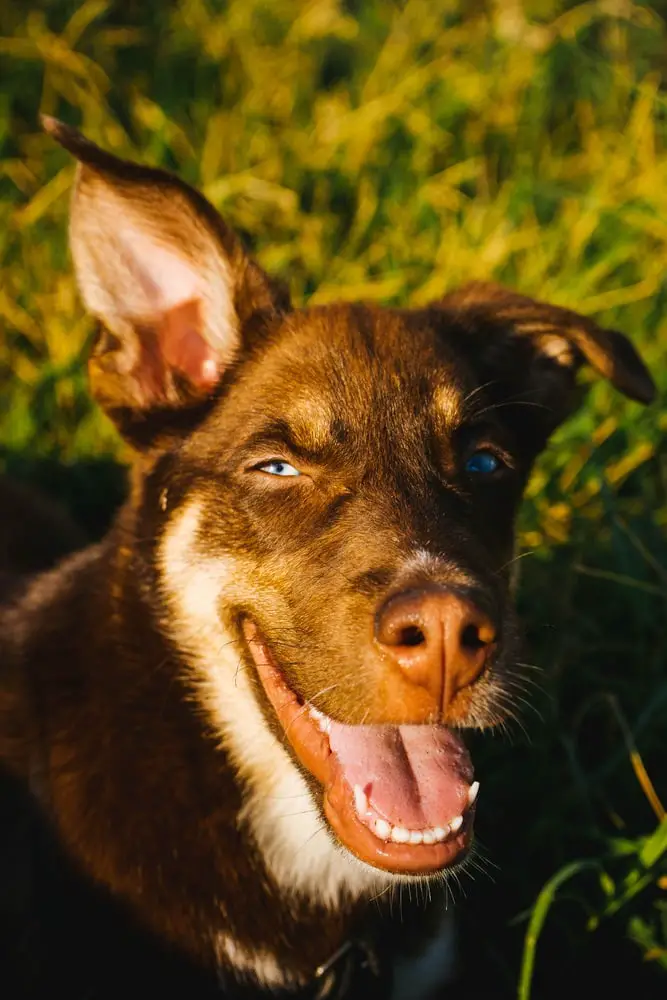
Intelligence and Trainability
The Ausky is an intelligent breed, thanks to its Australian Cattle Dog and Siberian Husky heritage. Both parent breeds are known for their problem-solving abilities and quick learning. As a result, the Ausky is typically eager to learn and can be trained effectively with consistent, positive reinforcement techniques.
However, it is important to note that this hybrid can also inherit the independent and sometimes stubborn nature of the Siberian Husky. Patience and persistence are crucial when training an Ausky, as well as providing varied and engaging training sessions to keep them interested.
Energy Levels and Exercise Requirements
Auskies are a high-energy breed, requiring regular physical activity to stay happy and healthy. Their Siberian Husky parent is known for its endurance and stamina, while the Australian Cattle Dog possesses incredible drive and determination. As such, the Ausky needs a minimum of one hour of daily exercise, which can include brisk walks, runs, hiking, or engaging in various dog sports like agility or herding.
No products found.
Playfulness and Affection
Auskies are generally affectionate and friendly, enjoying the company of their human family members. They can be quite playful and may retain their puppy-like exuberance well into adulthood. This hybrid tends to form strong bonds with its owners and may develop separation anxiety if left alone for extended periods.
It’s essential to provide companionship and mental stimulation to prevent boredom and destructive behaviors.
Prey Drive and Herding Instincts
The Ausky may inherit the strong prey drive of the Siberian Husky, making them prone to chasing smaller animals like squirrels or cats. Additionally, they may display herding instincts from their Australian Cattle Dog parentage, which could result in attempts to “herd” or nip at the heels of other animals or even children.
Proper training and socialization from an early age are crucial to managing these instincts and ensuring a well-behaved and well-rounded companion.
Health and Lifespan
Common Health Issues
While mixed breed dogs often benefit from hybrid vigor, making them less prone to certain genetic health problems than purebred dogs, the Ausky can still be predisposed to some health issues from its parent breeds. Some common health concerns to watch for include:
- Hip and Elbow Dysplasia: These joint disorders are common in medium to large dog breeds and can cause pain, arthritis, and mobility issues.
- Eye Problems: The Ausky may inherit eye conditions like progressive retinal atrophy (PRT), cataracts, or corneal dystrophy from their Siberian Husky parent.
- Deafness: Australian Cattle Dogs are known to have a higher incidence of hereditary deafness, which could potentially affect Ausky puppies.
- Obesity: Auskies have hearty appetites and can be prone to obesity if not monitored carefully. Regular exercise and a balanced diet are key to maintaining a healthy weight.
Lifespan of the Ausky
Auskies have a relatively long lifespan, with an average of 12-15 years. Maintaining a healthy lifestyle through regular exercise, a balanced diet, and routine veterinary check-ups will contribute to a long and happy life for your Ausky.
Importance of Regular Veterinary Check-ups
Routine veterinary care is crucial for ensuring the health and well-being of your Ausky. Regular check-ups can help detect any health issues early on and allow your veterinarian to create a tailored care plan for your dog’s needs. It’s also essential to stay up to date on vaccinations, heartworm prevention, and parasite control to protect your Ausky from common health risks.
Care and Grooming
Coat Maintenance and Shedding
The Ausky’s double coat requires regular grooming to keep it looking its best and to reduce shedding. It’s essential to brush your Ausky at least two to three times per week, increasing the frequency during seasonal shedding periods, which typically occur twice a year. A slicker brush or an undercoat rake can help remove loose hairs and prevent matting. Be sure to check for any skin irritations, infections, or parasites during grooming sessions.
No products found.
Dental Care
Dental care is an important aspect of maintaining your Ausky’s overall health. Regular teeth brushing can help prevent plaque buildup, gum disease, and bad breath. Aim to brush your dog’s teeth at least two to three times per week using a toothbrush and toothpaste designed specifically for dogs. In addition, provide your Ausky with dental chews or toys that can help support good oral hygiene.
Nail Trimming
Nail trimming is another essential aspect of your Ausky’s grooming routine. Overgrown nails can be uncomfortable for your dog and may even lead to injuries or infections. It’s recommended to trim your dog’s nails every three to four weeks, depending on their activity level and nail growth rate. If you’re unsure how to trim your dog’s nails or feel uncomfortable doing it, consult a professional groomer or your veterinarian for guidance.
Bathing and General Hygiene
Auskies generally do not require frequent baths, as their coats are relatively low-odor and dirt-resistant. Aim to bathe your dog once every two to three months or as needed. Use a gentle, dog-safe shampoo to avoid irritating your Ausky’s skin and ensure to rinse the coat thoroughly to remove any residue.
Be sure to clean your dog’s ears regularly with a veterinarian-approved ear cleaner to prevent ear infections and keep an eye out for any signs of irritation or infection, such as redness, swelling, or discharge.
Training and Socialization
Training Techniques and Tips
When training your Ausky, it’s essential to use positive reinforcement techniques that emphasize rewards and encouragement. These intelligent dogs tend to respond well to praise, treats, and play as rewards for desired behavior. Remember that consistency is key, so be sure to establish clear rules and expectations from the beginning. As mentioned earlier, Auskies can inherit some stubbornness from their Siberian Husky parent, so patience and persistence will be vital during training sessions.
- Start training early: Begin training your Ausky as soon as you bring them home, focusing on basic obedience commands like “sit,” “stay,” and “come.”
- Keep sessions short and engaging: Short, focused training sessions are more effective for maintaining your Ausky’s interest and preventing frustration or boredom.
- Practice regularly: Incorporate training sessions into your dog’s daily routine to reinforce learned behaviors and ensure consistent progress.
Importance of Early Socialization
Socialization is crucial for developing a well-adjusted and confident Ausky. Expose your puppy to various environments, people, and other animals from an early age to help them develop positive associations and reduce the likelihood of fear or aggression in new situations. Enrolling your Ausky in a puppy socialization class can be an excellent way to introduce them to new experiences and teach them essential social skills.
Obedience Training
Obedience training helps to establish a strong bond between you and your Ausky, while also teaching them essential manners and commands. It’s a good idea to enroll your dog in an obedience class or work with a professional trainer to ensure proper guidance and consistency in training techniques.
Dealing with Potential Behavioral Issues
As with any breed, Auskies may develop behavioral issues if their physical, mental, and emotional needs are not met. Providing appropriate outlets for your Ausky’s energy, such as daily exercise and mental stimulation, can help prevent unwanted behaviors like excessive barking, digging, or chewing. If your dog exhibits behavioral issues despite your efforts, consider consulting a professional dog trainer or a veterinary behaviorist for further assistance.
Choosing the Right Ausky Puppy
Researching and Selecting a Breeder
When looking to add an Ausky puppy to your family, it’s essential to do thorough research and find a reputable breeder. A responsible breeder will prioritize the health and temperament of their dogs and can provide you with valuable information about the breed. Some tips for finding a reputable breeder include:
- Seek referrals: Ask friends, family, or your veterinarian for recommendations of reputable breeders they’ve had positive experiences with.
- Attend dog shows or events: Meet breeders and other dog enthusiasts at local dog shows, breed club events, or agility competitions.
- Utilize online resources: Search for breeder directories or breed-specific forums to gather information and read reviews from previous clients.
Visiting the Breeder and Meeting the Puppies
Once you’ve identified a potential breeder, arrange a visit to their facility to meet the puppies and their parents. A reputable breeder will be transparent about their breeding practices and allow you to tour their facility. Some key things to observe during your visit include:
- Cleanliness of the facility: The environment should be clean, spacious, and well-maintained, providing the puppies with a safe and comfortable living space.
- Socialization opportunities: Puppies should be exposed to various people, sounds, and experiences to help them develop well-rounded personalities.
- Health of the parents and puppies: Healthy puppies and parent dogs should appear well-groomed, energetic, and free of any signs of illness.
Health Checks and Guarantees
A reputable breeder will provide health checks and guarantees for their puppies, ensuring that they are free of any genetic health issues. Request documentation of health clearances for both parent dogs, such as hip and elbow evaluations, eye examinations, and hearing tests. A responsible breeder will also offer a health guarantee for your puppy, covering any congenital or hereditary issues that may arise within a specified period.
Selecting Your Ausky Puppy
When choosing your Ausky puppy, consider factors such as temperament, activity level, and physical appearance. Observe the puppies interacting with their littermates and the breeder and look for a puppy that displays confidence and friendliness. It’s essential to select a puppy whose personality and energy level align with your lifestyle, as this will help ensure a successful and harmonious relationship with your new companion.
Integrating Your Ausky into Your Family
Preparing Your Home
Before bringing your Ausky puppy home, ensure that your living space is safe and welcoming for your new addition. Consider these steps for creating a dog-friendly environment:
- Remove potential hazards: Secure electrical cords, remove poisonous plants, and store chemicals and medications in inaccessible areas.
- Set up a designated space: Create a comfortable area for your puppy, including a bed, crate, and toys, to help them feel secure and settled in their new home.
- Establish boundaries: Decide which areas of your home will be off-limits to your puppy and install baby gates or barriers if needed.
Introducing Your Ausky to Family Members and Other Pets
Proper introductions are essential to establishing a positive relationship between your Ausky and other family members or pets. Here are some tips for successful introductions:
- Keep the environment calm: Choose a neutral, quiet location for introductions to prevent your puppy from feeling overwhelmed.
- Introduce one family member at a time: Allow your puppy to meet each family member individually, using positive reinforcement and treats to create a positive association.
- Supervise initial interactions with other pets: Introduce your puppy to other pets gradually and under close supervision, using positive reinforcement to reward calm, friendly behavior.
Establishing a Routine
Establishing a consistent routine will help your Ausky adjust to their new environment and feel more secure in their new home. Plan regular meal times, bathroom breaks, play sessions, and training exercises to help your puppy understand what to expect throughout the day.
Joining a Dog Community
Connecting with other dog owners can provide valuable support, advice, and opportunities for socialization for your Ausky. Consider joining local dog clubs, attending dog events, or participating in group training classes to expand your network and enrich your dog’s life.
Ongoing Training and Socialization
Your Ausky’s training and socialization shouldn’t end after puppyhood. Continued exposure to new experiences, people, and other animals will help your dog maintain their social skills and adaptability.
Regular training sessions will not only reinforce good behavior but also provide mental stimulation and strengthen your bond with your Ausky. Keep challenging your dog with new commands or activities, such as advanced obedience or dog sports, to keep them engaged and thriving throughout their life.
Activities and Sports Suited for Auskies
Agility Training
Agility training is an excellent activity for Auskies, as it provides both physical exercise and mental stimulation. This sport involves guiding your dog through a series of obstacles, such as jumps, tunnels, and weave poles, while promoting teamwork and communication between you and your dog. Joining an agility club or participating in local competitions can provide a fun and rewarding experience for both you and your Ausky.
Canine Freestyle
Canine Freestyle, also known as dog dancing, is a creative and enjoyable way to bond with your Ausky while keeping them physically active. This sport combines obedience, tricks, and dance to create unique routines set to music. Participating in canine freestyle classes or workshops can help you and your Ausky learn new skills and develop a strong connection.
Herding Trials
Given their Australian Cattle Dog heritage, Auskies may possess natural herding instincts. Participating in herding trials or training sessions can be a great way to channel your dog’s energy and natural abilities while offering a rewarding challenge. These events test your dog’s ability to control livestock and follow commands under timed conditions.
Hiking and Outdoor Adventures
Auskies are well-suited for outdoor activities, thanks to their endurance and adventurous spirit. Hiking, trail running, or even camping can provide a fun and engaging way to bond with your Ausky while keeping them physically active. Ensure your dog is appropriately trained, and consider using a dog-specific harness and leash for safety during your adventures.
Skijoring and Bikejoring
For those who enjoy winter sports, skijoring or bikejoring can be an exciting way to incorporate your Ausky into your activities. In skijoring, your dog is harnessed and pulls you on cross-country skis, while bikejoring involves your dog pulling you on a bike. These sports provide excellent exercise for your Ausky and tap into their Siberian Husky parent’s natural love for pulling and running.
When engaging in any sports or activities with your Ausky, it’s essential to ensure your dog’s safety and well-being. Always be aware of your dog’s physical limitations and provide appropriate rest, hydration, and nutrition to support their energy levels. Regular veterinary check-ups will help ensure your Ausky remains in optimal health and ready for your next adventure together.
Frequently Asked Questions
Are Auskies hypoallergenic?
No, Auskies are not hypoallergenic. They have a double coat that sheds seasonally, which may not be suitable for allergy sufferers.
Is the Ausky a good family dog?
Yes, the Ausky can make an excellent family dog when socialized and trained properly. They are intelligent, energetic, and affectionate, but their high energy levels and prey drive may require proper supervision around small children and pets.
Can Auskies live in apartments?
Auskies can adapt to apartment living if they receive enough daily exercise and mental stimulation. However, they are better suited to homes with yards where they can safely burn off energy.
Final Thoughts
The Husky Australian Cattle Dog mix, or Ausky, is an intelligent, energetic, and loving breed that can make a fantastic companion for the right family. With their striking appearance, adventurous spirit, and loyal nature, these dogs have the potential to be wonderful pets for those willing to dedicate time and effort to their care, training, and socialization.
By thoroughly researching the breed, seeking reputable breeders or adoption options, and providing ongoing physical and mental stimulation, you can ensure a happy, healthy, and fulfilling life for your Ausky. Embrace the unique qualities and challenges of this remarkable mix, and you’ll be rewarded with a loyal and loving companion that will enrich your life in countless ways.


